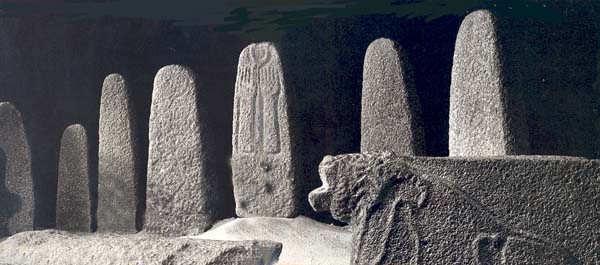Image Details

Though only the center stone bears markings—two hands raised toward a crescent, a symbol of the moon god Sin—all these stones may have represented gods in a non-anthropomorphic way, a practice called aniconism. Mettinger suggests aniconism was a common alternative to idol worship in ancient Israel. He identifies two kinds of aniconism. In “material aniconism,” as exemplified by the masseboth in the back corners of the holy of holies at Arad (see photo), stones may represent a god. “Empty-seat aniconism,” as exemplified by the cherubim that were part of God’s throne in the Jerusalem Temple, feature a seat or mount for a god—an indication of the god’s presence nearby. One ivory cherub (see photograph) probably comes from Arslan Tash, in northern Syria, and dates to the ninth or eighth century B.C.E. Victor Hurowitz, our reviewer, notes that Mettinger fails to distinguish between the different conceptions of divinity that each kind of aniconism represents. Though both localize the presence of a god for worship, material aniconism identifies the god with a stone; empty-seat aniconism leaves the god transcendent.
